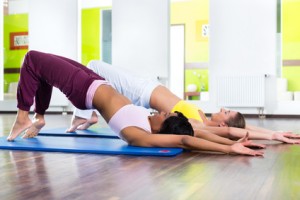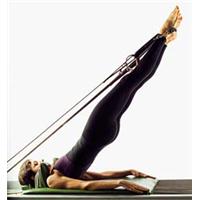
Though sometimes we may care not to admit it, we all know that regular exercise can help keep us fit and healthy.
But if you still haven’t joined the gym, started playing a sport or just haven’t had time to build more activity into your daily life, there’s good news. According to experts, it’s not too late to start getting active on a regular basis even if you’re pushing 50.
In a paper published in the British Medical Journal (i), researchers from Uppsala University in Sweden report how they quizzed more than 2,000 men aged 50 and over about their activity levels. What they discovered was those who upped their activity levels in their 50s enjoyed similar life-extending benefits as those who were already regular exercisers by the time they reached middle age.
In fact, those who went from being low to moderate exercisers when they were younger to regular exercisers between the age of 50 to 60 were more likely to live longer than those who were already doing high levels of activity at that age. The effect on lifespan, say the researchers, is the same as giving up smoking.
“Increased physical activity in middle age is eventually followed by a reduction in mortality to the same level as seen among men with constantly high physical activity,” the report concludes. “This reduction is comparable with that associated with smoking cessation.”
The survey defines ‘heavy’ activity as hard physical training, competitive sport, active recreational sports and heavy gardening for at least three hours a week. But if the mere thought of three hours’ heavy sports training leaves you feeling weak at the knees, another way to increase your activity levels whatever your age is to practise an exercise method such as Pilates.
Lengthening and strengthening
Developed by German-born Joseph Pilates, Pilates is an exercise system that originally attracted performance professionals such as actors, dancers and athletes. Today, however, it is practised by ordinary people in gyms, exercise studios, church halls and living rooms all over the world, thanks to the way it effectively lengthens and strengthens all the body’s muscle groups.
And since it aims to strengthen core stability as well as improve posture and flexibility, Pilates is ideal for older exercisers with back and joint problems not to mention those who are want to avoid them in later life too.
However, so that seasoned and inexperienced exercisers alike can find out exactly what happens in the body during the classic series of Pilates exercises, Paul Massey a UK-based Pilates instructor and physiotherapist has written The Anatomy of Pilates (Lotus Publishing, £14.99).
The Anatomy of Pilates, which contains 150 full-colour anatomical illustrations, is divided in to chapters on the principles of the Pilates Method, posture and movement assessment, and application of the Pilates Method with a chapter on the classic series of exercises.
Along with detailed anatomical illustrations, each exercise in the series includes the following:
Full description of how the exercise performed
Objectives of the exercise
Tips on what to concentrate on
How the breathing pattern works
Checkpoints
Pitfalls
Each exercise also comes with list of which muscles are involved for instance, Spine Stretch Forward, which is used to stretch the spine and back extensors, involves the lower abdominals, hamstrings, back extensors, psoas and hip flexors.
And if you don’t have a degree in anatomy, the illustrations show you exactly where each muscle is and how it moves during the exercise.
“If you’re practising Pilates and you want to know more about it and how it works to lengthen and strengthen your muscles, The Anatomy of Pilates is exactly what you need,” claims the author.
The Anatomy of Pilates, priced from £14.99 and available from www.amazon.co.uk Waterstones and Lotus Publishing – www.lotuspublishing.co.uk
About the author
Paul Massey is a leading physiotherapist in private practice as well as a Pilates instructor. Massey works closely with governing bodies of track and field, swimming, and hockey, both at home and internationally, and has attended numerous Olympic Games and World Championships. He received the BBC Sports Personality of the Year Team Award in 2000. He lectures worldwide on sports injuries and Pilates, and has written or co-written several books on the subject, including Sports Pilates: How to Prevent and Overcome Sports Injuries and The Pilates Prescription for Back Pain.
References:
(i) Liisa Byberg, Håkan Melhus, Rolf Gedeborg, Johan Sundström, Anders Ahlbom, Björn Zethelius, Lars G Berglund, Alicja Wolk, Karl Michaëlsson. “Total mortality after changes in leisure time physical activity in 50 year old men: 35 year follow-up of population based cohort.” BMJ 2009;338:b688, doi: 10.1136/bmj.b688



